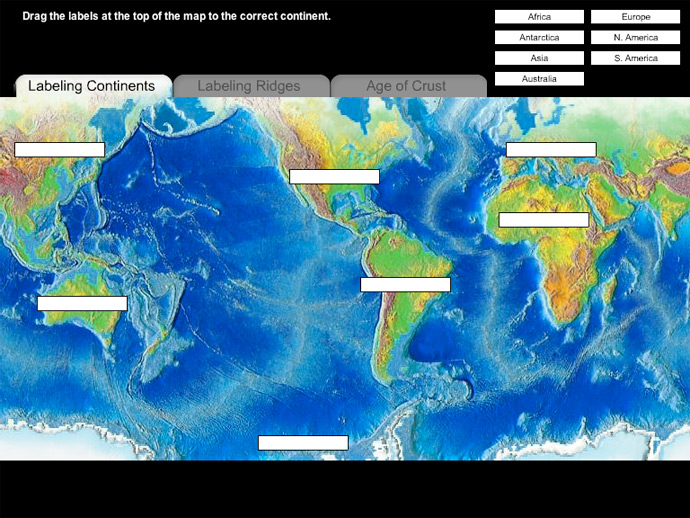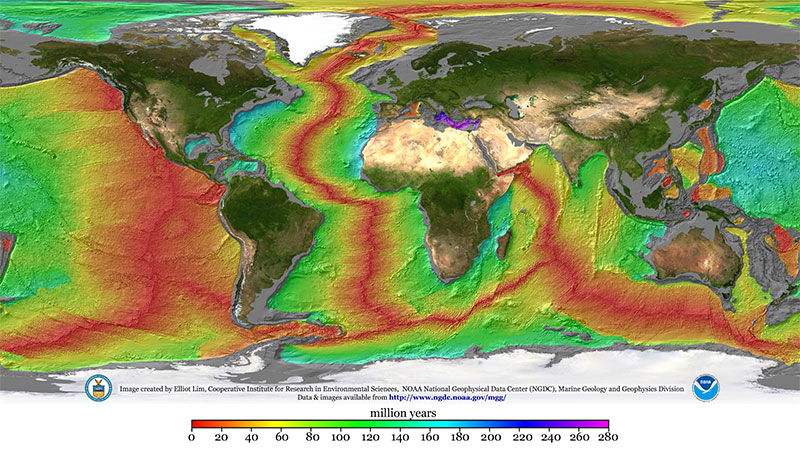The ionic growing earth ige posits the same 8 elements that started the earth heated the planet for the first 3 3 5 billion years of its existence see ige fig.
Is the age of the ocean floor constant.
In addition the cooling plate model explains the almost constant depth and heat flow observed in very old seafloor and lithosphere.
Very little of the sea floor is older than 150 million years.
Seafloor spreading samples collected from the ocean floor show that the age of oceanic crust increases with distance from the spreading centre important evidence in favour of this process.
The following features are shown at example depths to scale though each feature has a considerable range at which it may occur.
Because of this correlation between age and subduction potential very little ocean floor is older than 125 million years and almost none of it is older than 200 million years.
The answer is found by multiplying the annual rate of addition of sediments to the ocean 27 5 billion tons per year by the alleged evolutionary age of the ocean 1 billion years.
Continental shelf 300 feet continental slope 300 10 000 feet abyssal plain 10 000 feet abyssal hill 3 000 feet up from the abyssal plain seamount 6 000 feet.
This continual motion is evidenced by the occurrence of earthquakes and volcanoes.
This is enough to cover the entire ocean floor with 97 500 feet 18 5 miles of sediment.
The cooling mantle model explains the age depth observations for seafloor younger that 80 million years.
Match scientists to their contributions to the understanding of how earth s surface changes.
Therefore seafloor dating isn t that useful for studying plate motions beyond the cretaceous.
This graphic shows several ocean floor features on a scale from 0 35 000 feet below sea level.
This is because the oldest sea floor is subducted under other plates and replaces by new surfaces.
Therefore the age of the ocean floor is not an accurate tool to measure the age of the earth.
The tectonic plates are constantly in motion and new surfaces are always being created.
The cooling plate model explains the age depth observations best for seafloor older that 20 million years.
Sediment age and thickness increases outward from the ocean ridge system.
No oceanic crust older than 180 million years was found.
Age of the ocean floor a critical analysis.
The arrival of water 1400 mya solidified the molten crust and by 1200 mya submerged the smaller planet.
During 1 billion years 27 5 billion billion tons of sediment would be produced.
See also.
These age data also allow the rate of seafloor spreading to be determined and they show that rates vary from about 0 1 cm.
The oldest seafloor has been radiometrically dated to only about 200 million years duxbury et al.
The mid atlantic ocean ridge is young ocean floor.




























